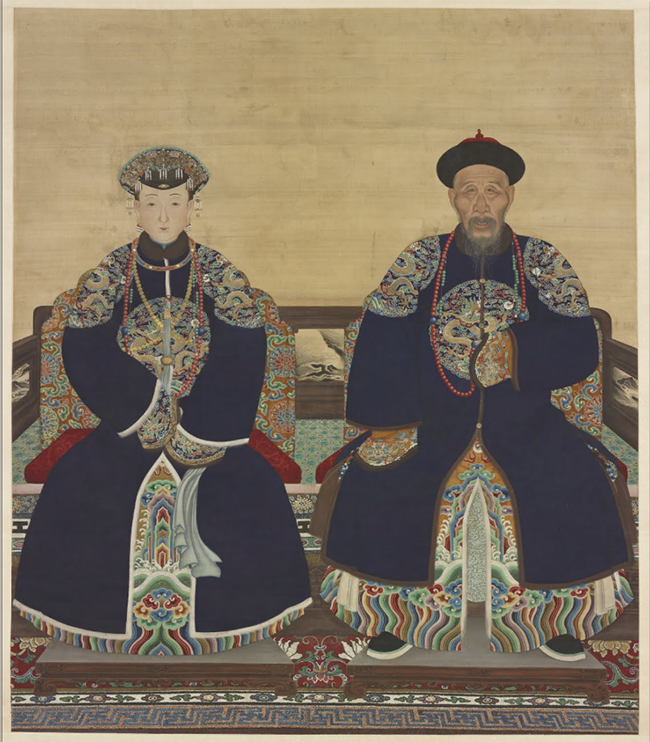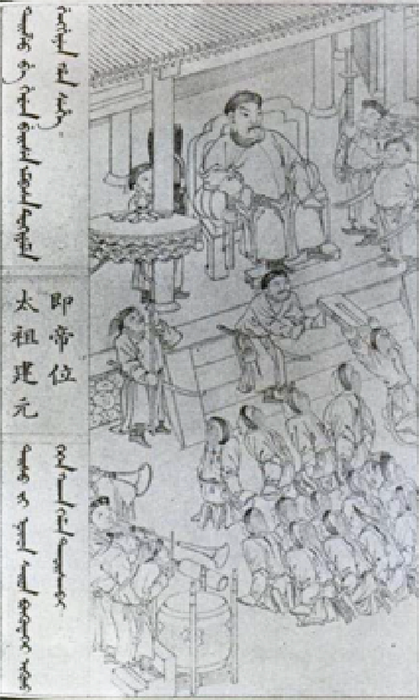
The Manchus
The Manchu name is descended from the Jurchens, the rulers of the Jin dynasty (1115-1234). The name
Manchu (M. Manju) was adopted in 1635 to designate the Jurchen people. The eastern tour of 1778
highlighted the Inner Asian dimension of the Qing state, a multiethnic polity that had roots in Inner Asia,
an area that linked China proper to the Eurasian continent. The Qing rulers were Manchus, a non-Han ethnic
group from northeast Asia who were ruling over a multiethnic Empire that included Manchus, Hans, Mongols,
Tibetans, and Uyghurs. They descended from the Jurchens, the rulers of the Jin dynasty (1115-1234). The Qing
dynasty was thus the last of a succession of non-Han dynasties that had ruled over imperial China for about
half of its recorded history.

Portrait of Manchu Prince Xun, also known as Yinti (1688-1755) and his wife, possibly Lady Jinse
Anonymous, mid-18th century, hanging scroll, ink and color on silk, National Museum of Asian Art. [Source Link]
Anonymous, mid-18th century, hanging scroll, ink and color on silk, National Museum of Asian Art. [Source Link]

Nurhaci, the first Qing emperor, proclaimed himself as Khan and ascended to the throne in 1616.
Image source | Manju I yargiyan kooli [The Manchu veritable records] 1781, cited in Wakeman 1986, 56
Image source | Manju I yargiyan kooli [The Manchu veritable records] 1781, cited in Wakeman 1986, 56